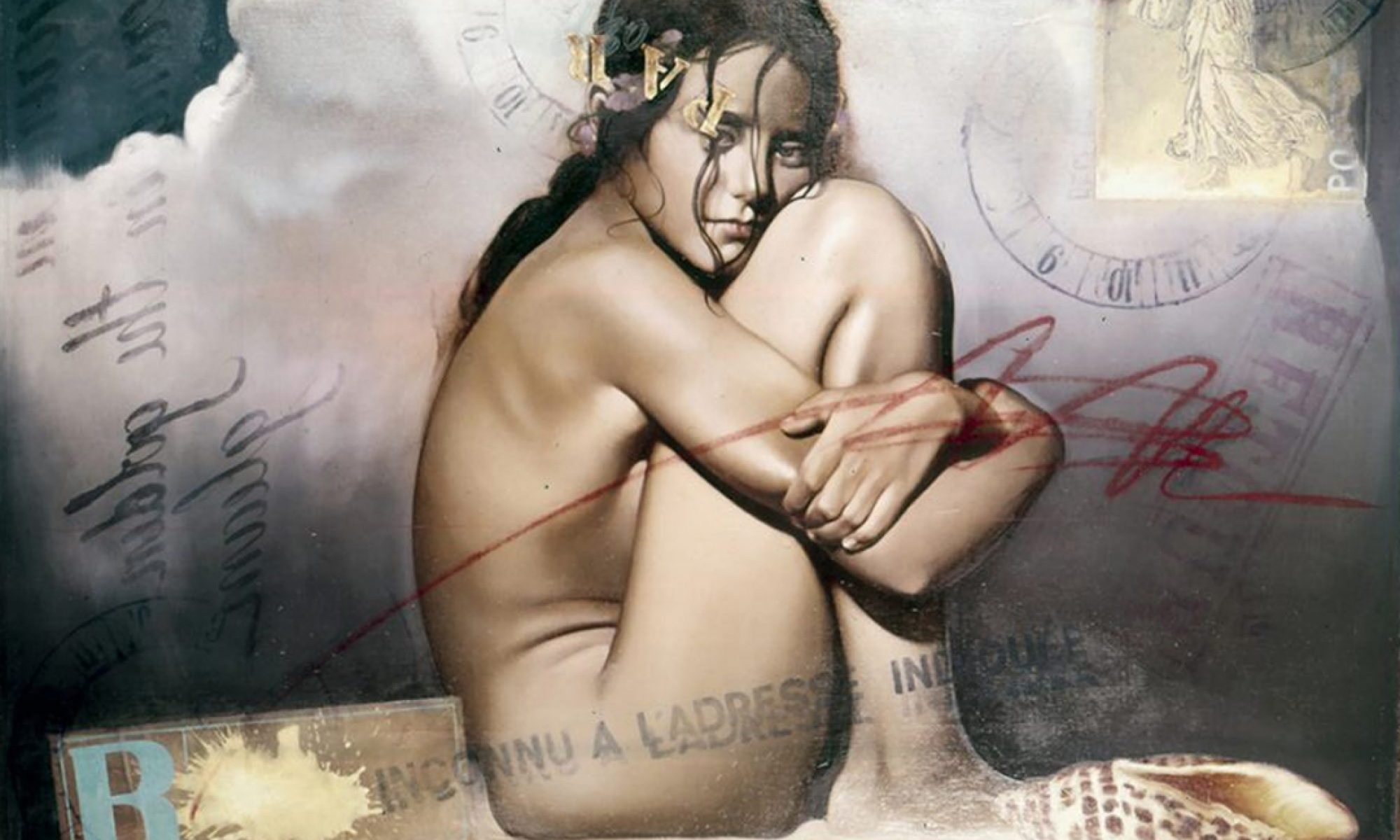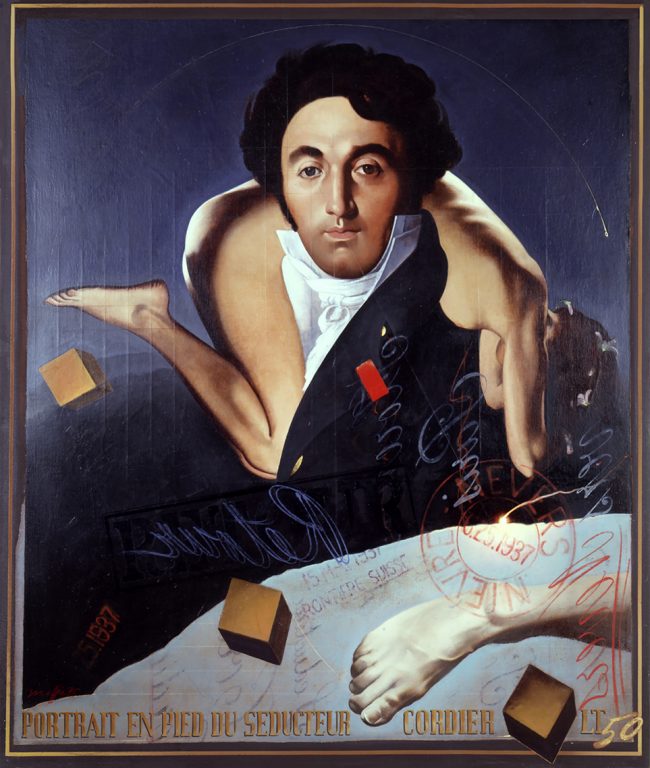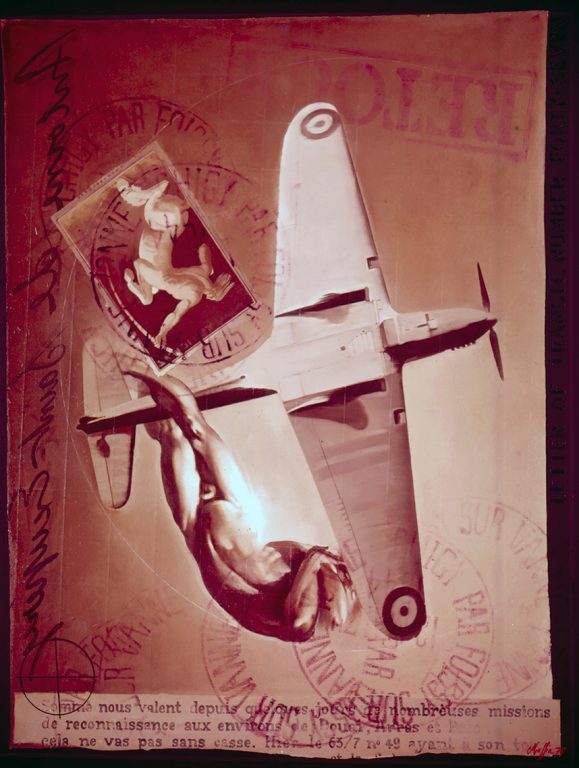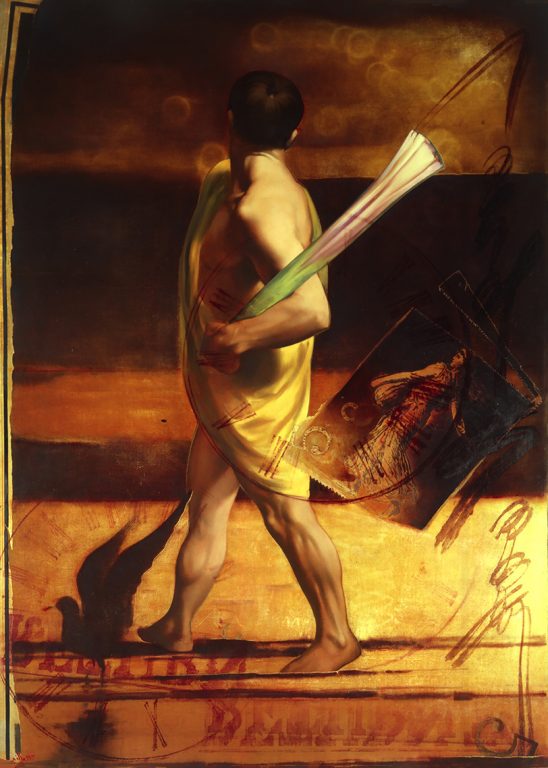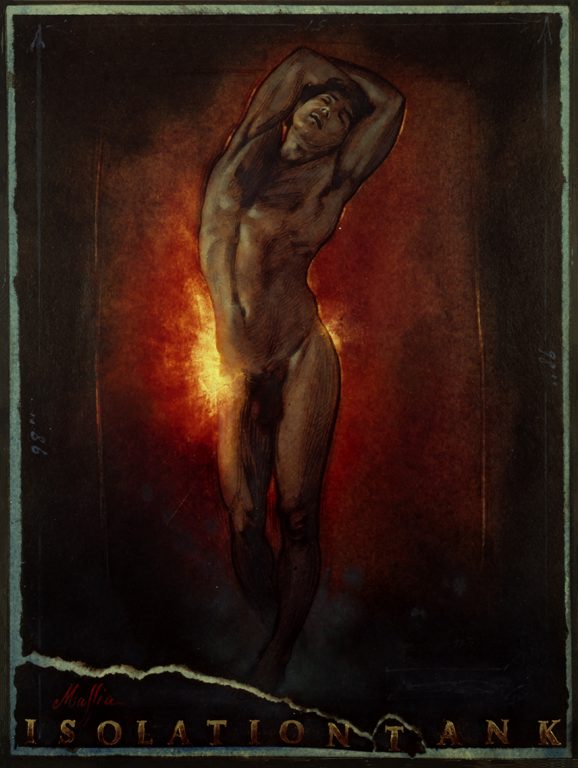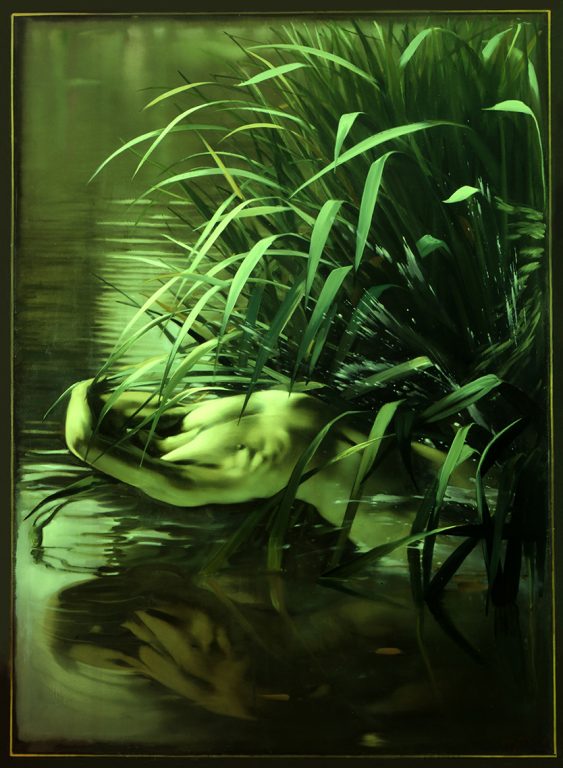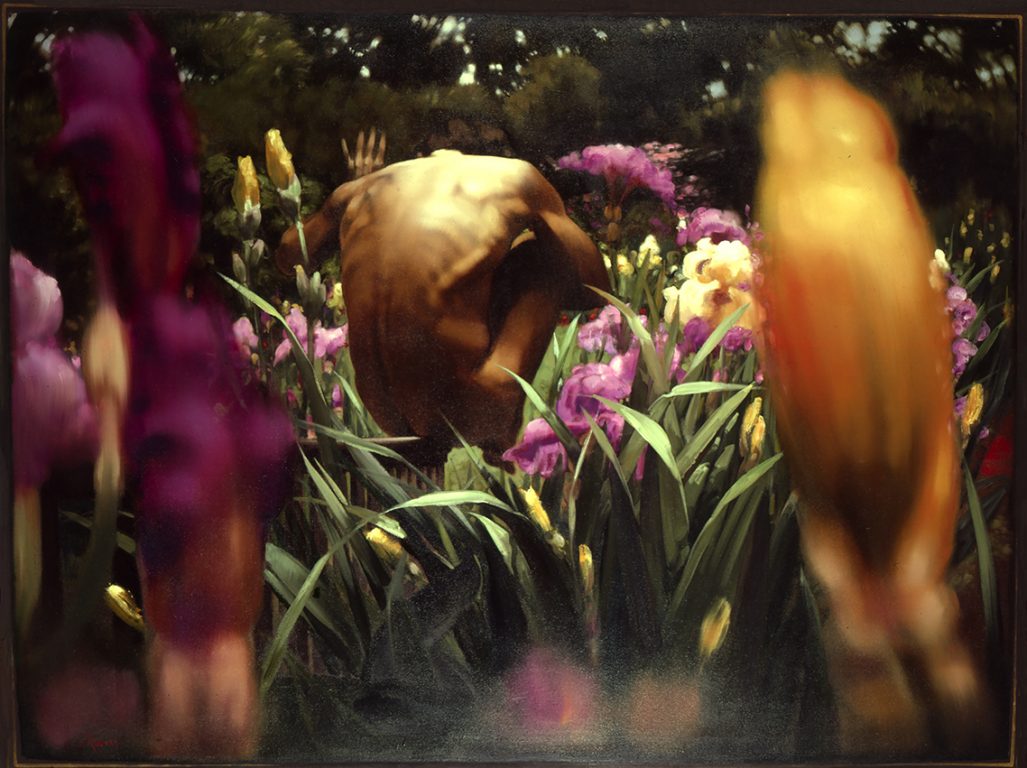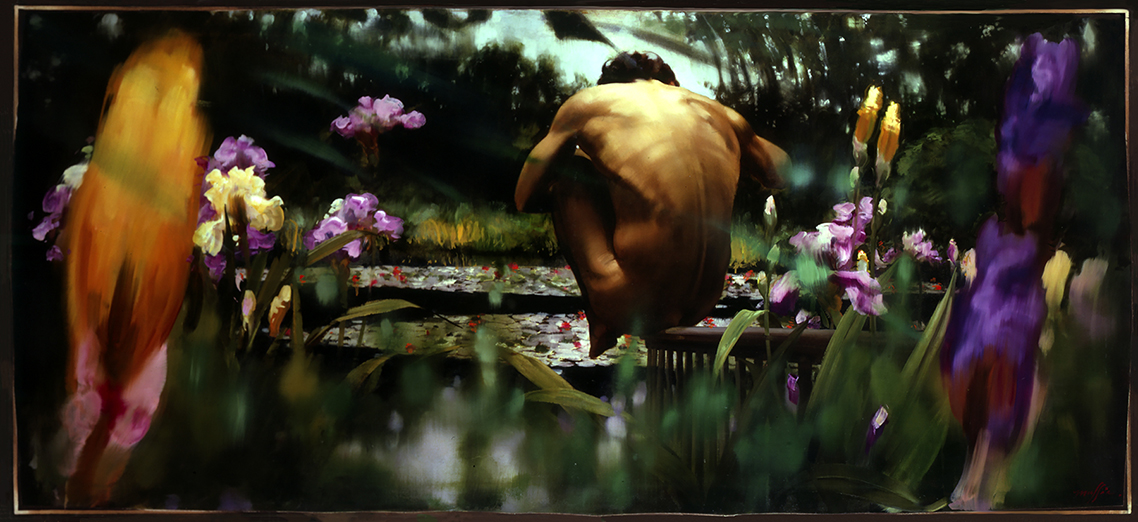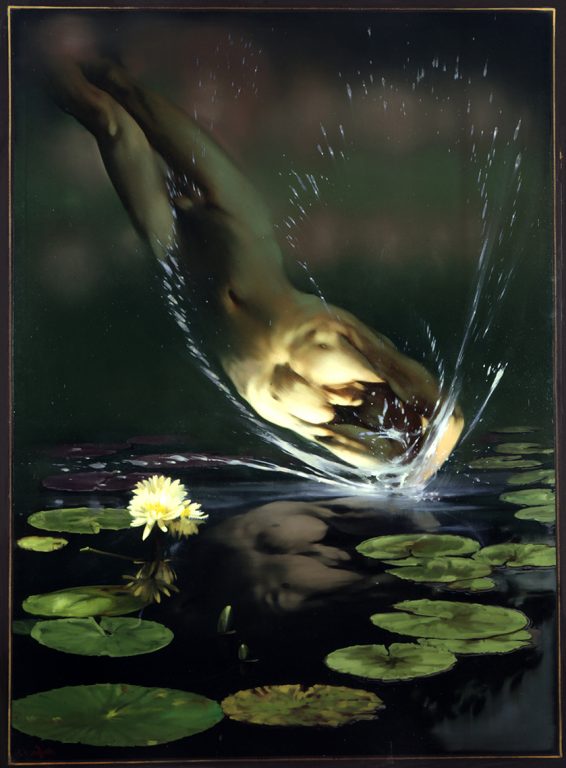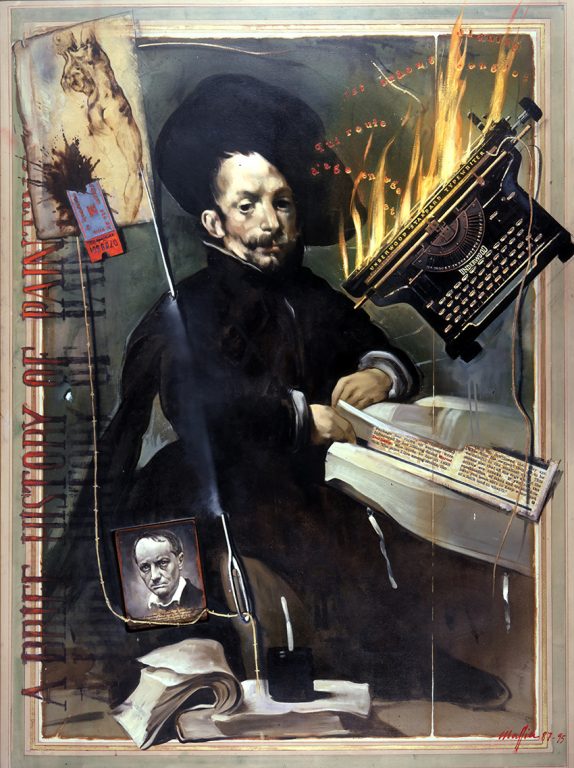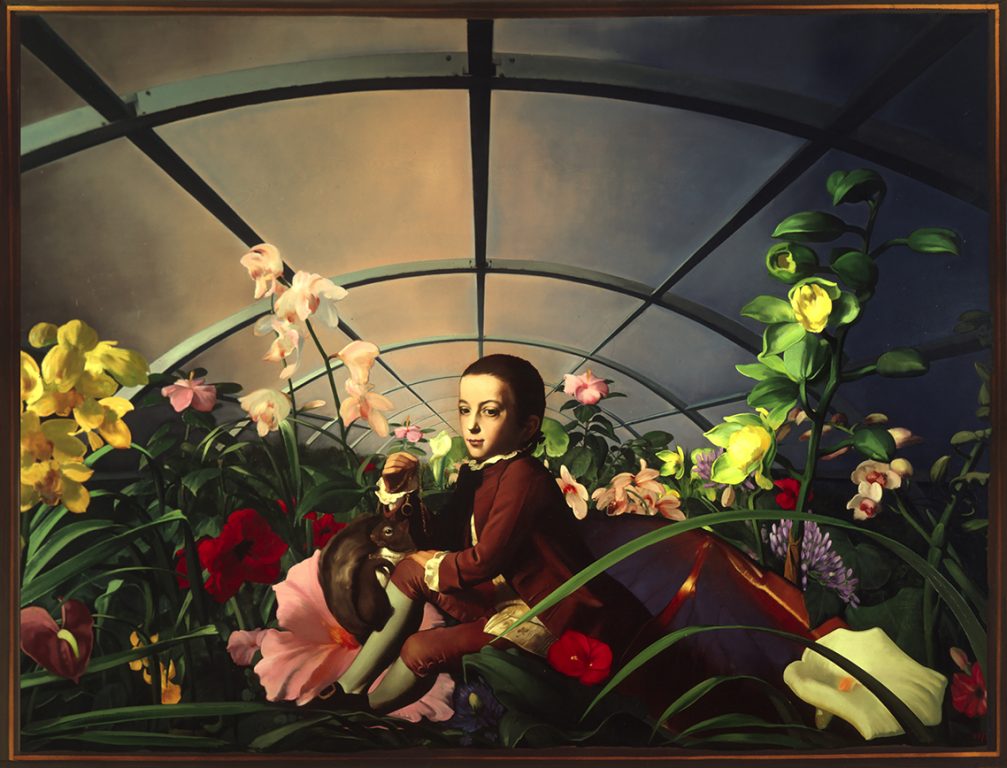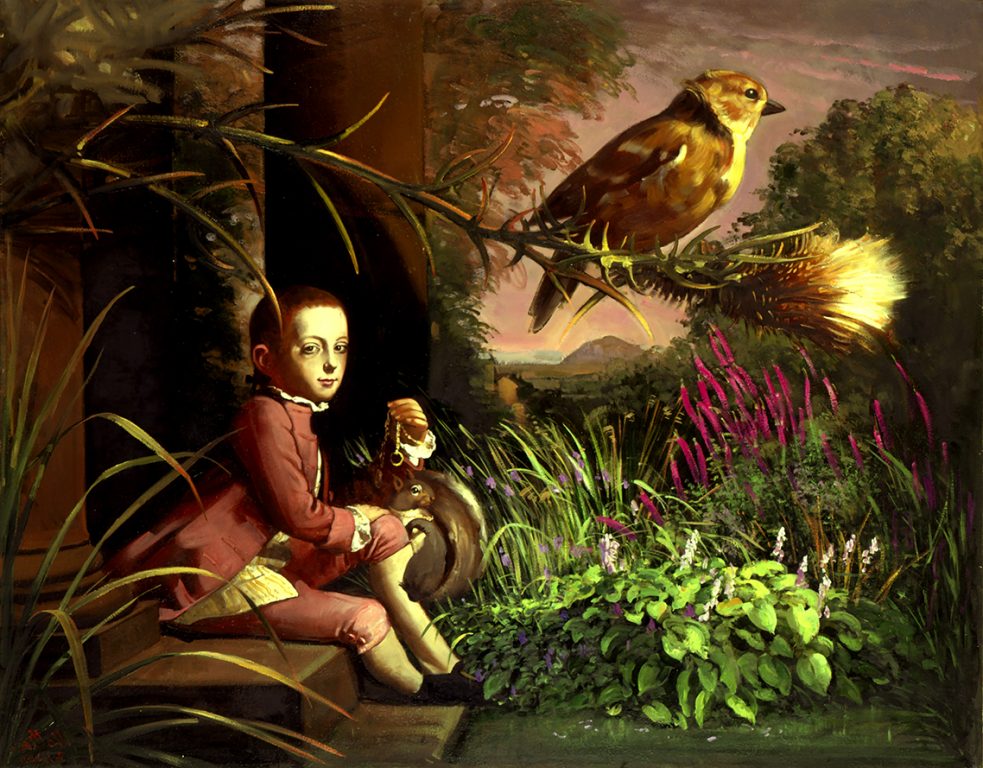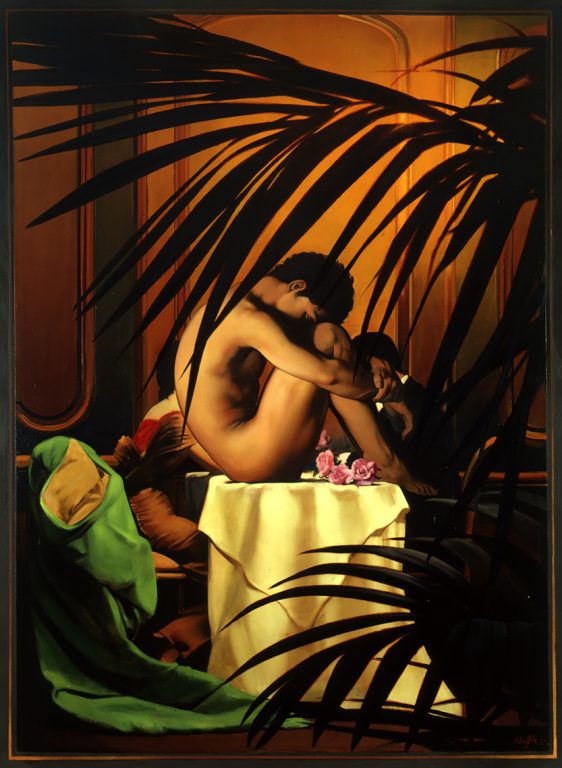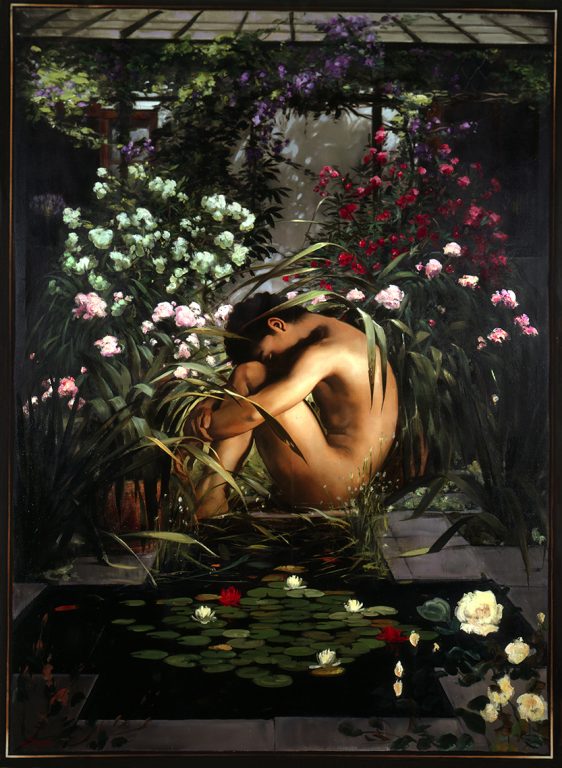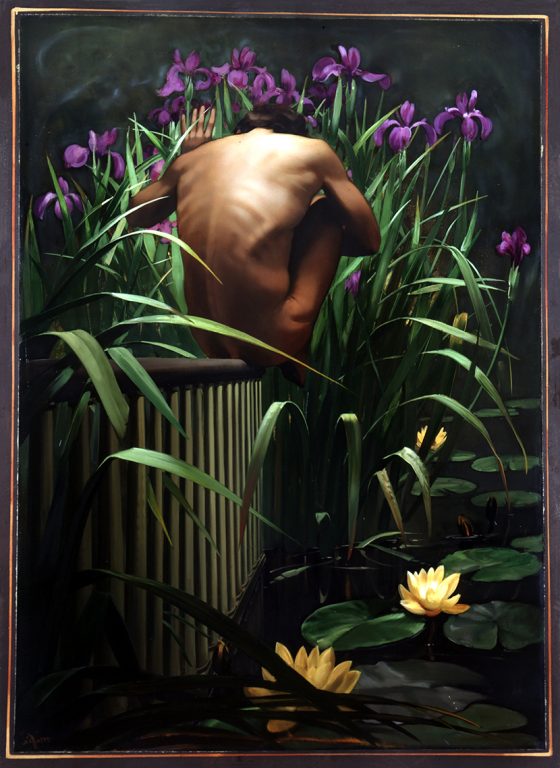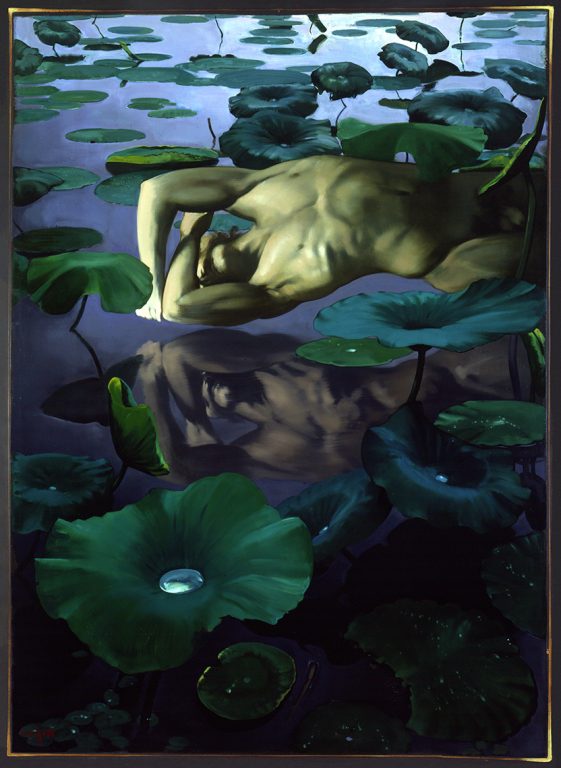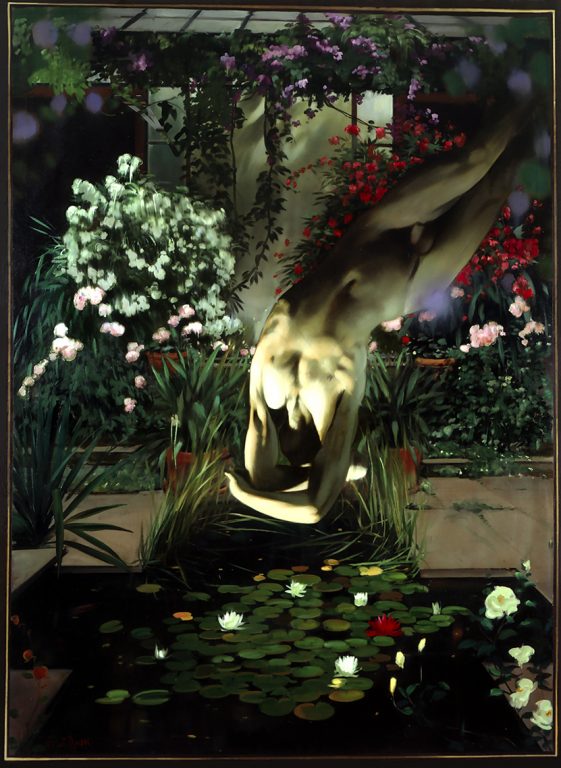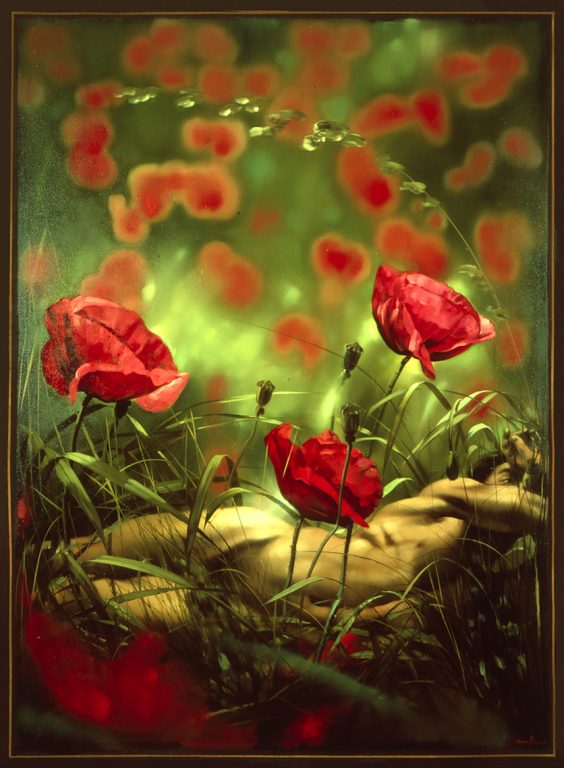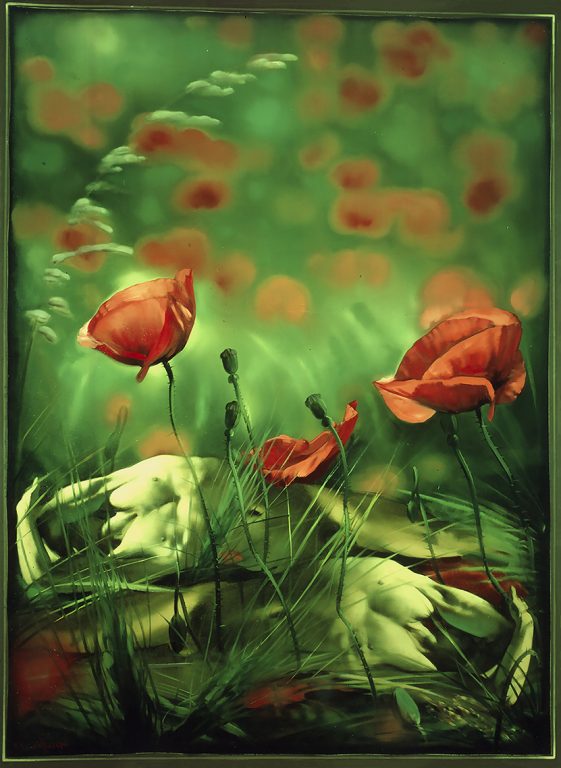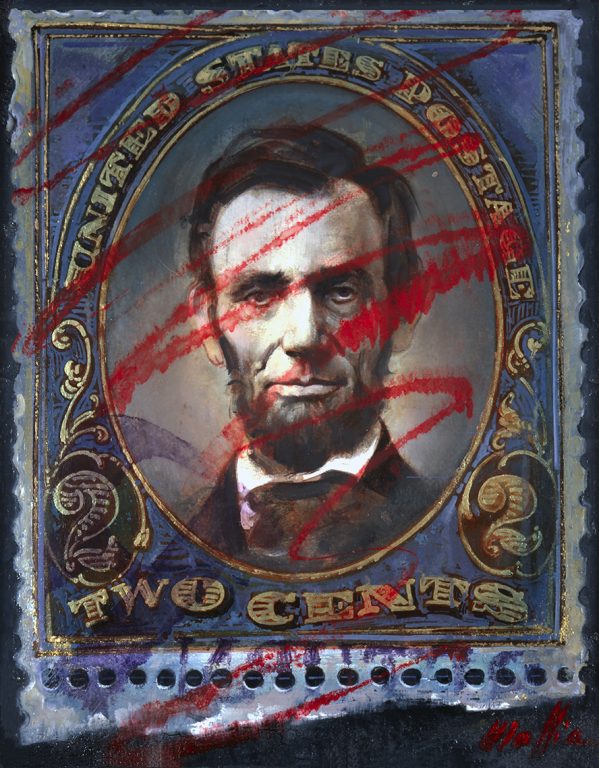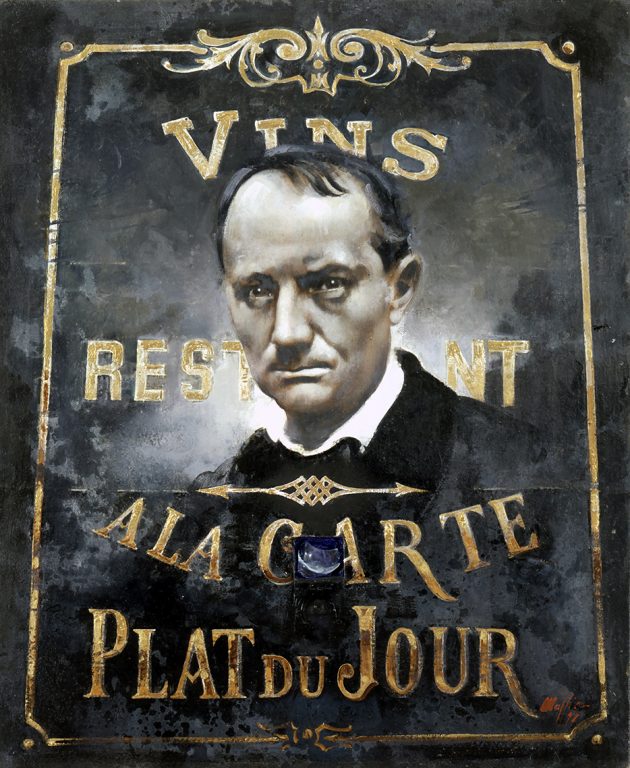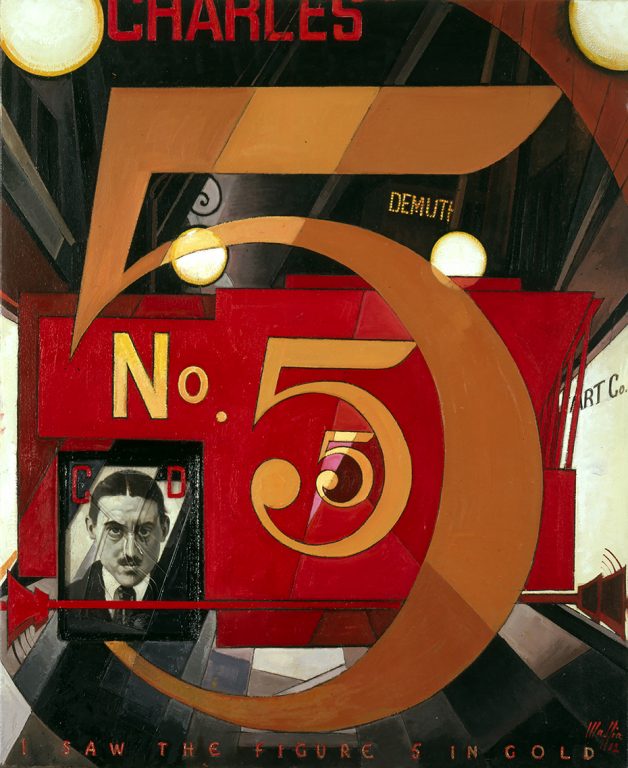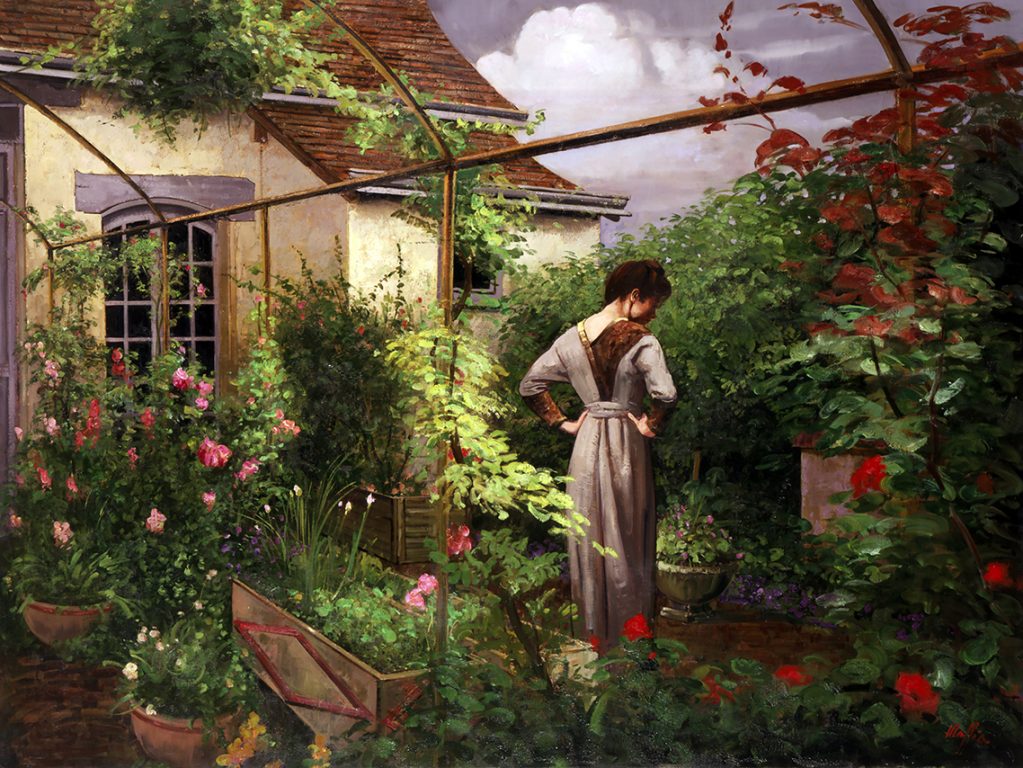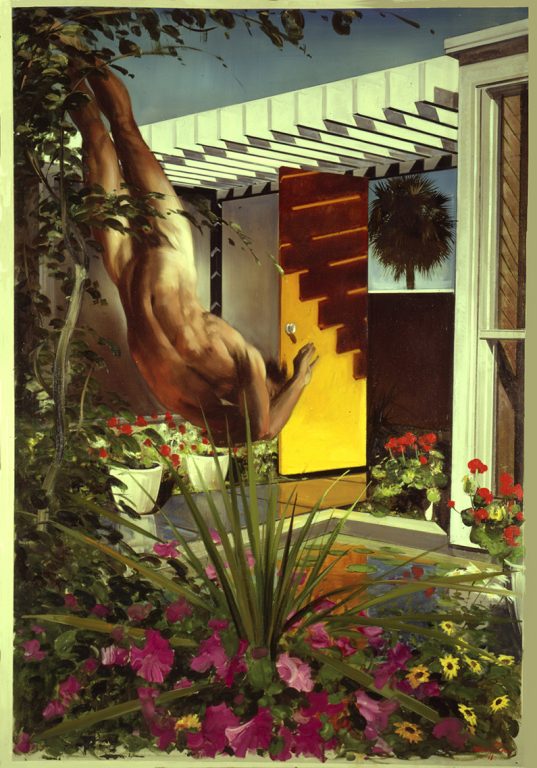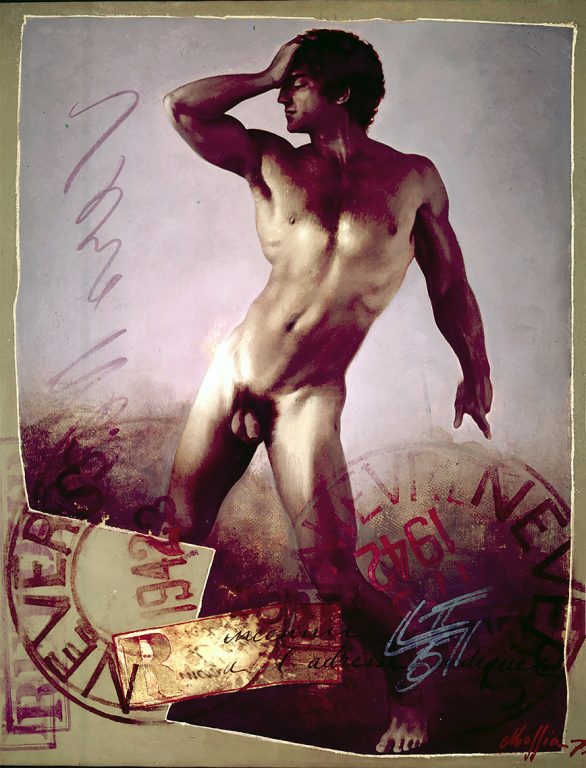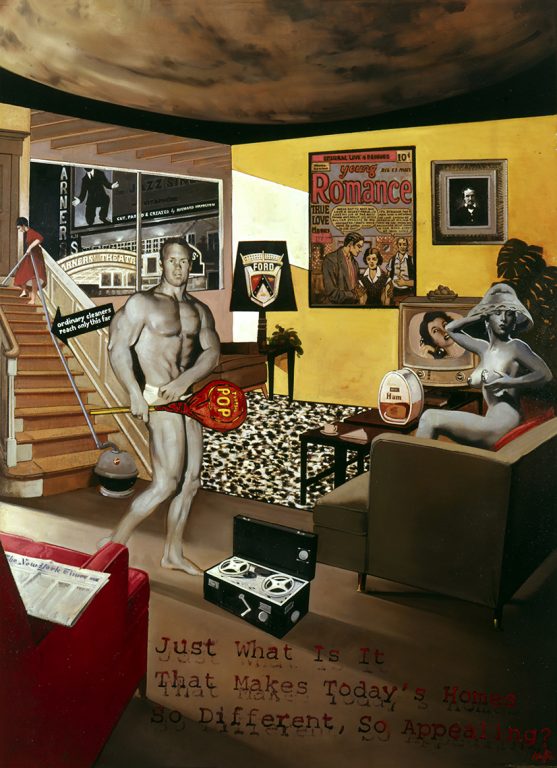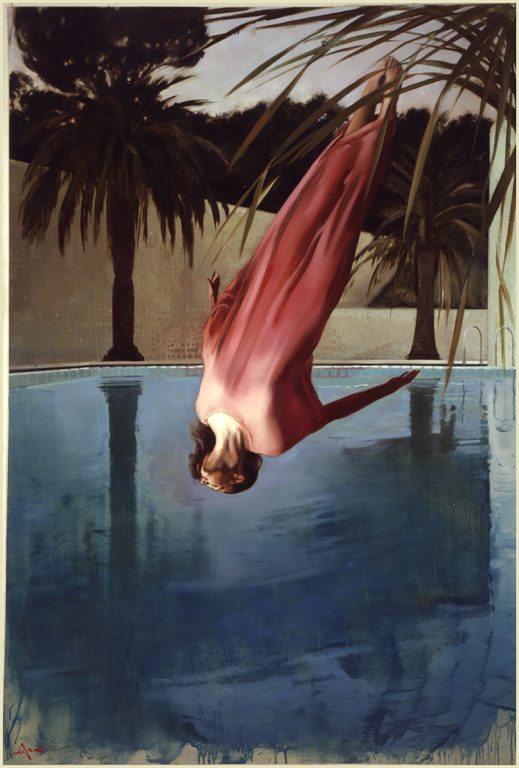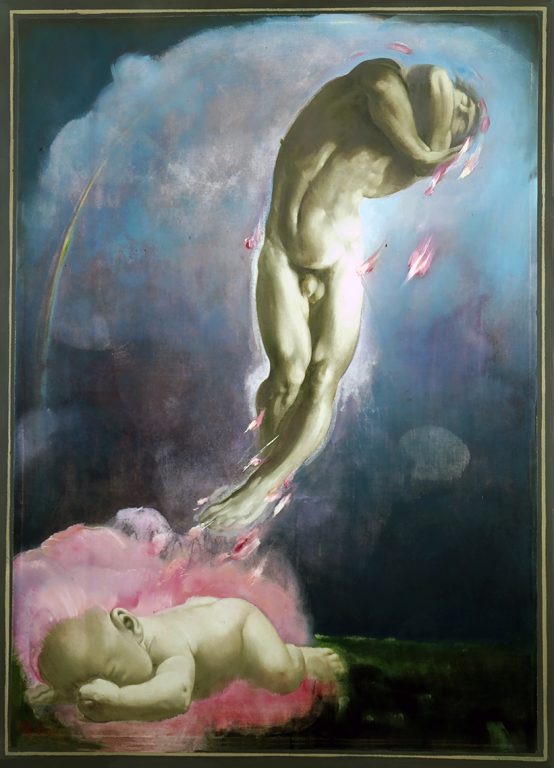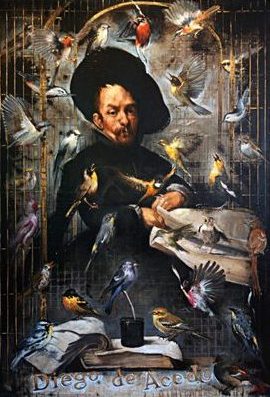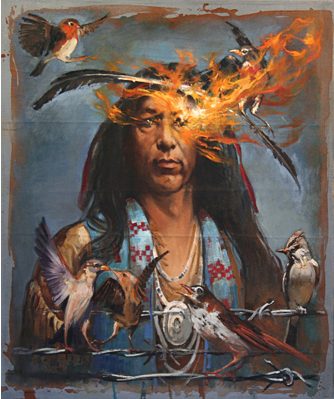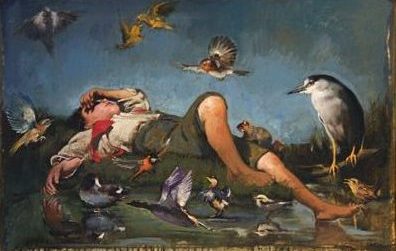Arts Magazine
October 1992
Daniel Maffia
By Karl Lunde
There are few contemporary realists whose paintings are as compelling as those of Daniel Maffia. Certain kinds of subject matter portraying violence or the bizarre in themselves demand attention. But Maffia’s paintings have a subject matter that is traditional and quiet, and yet they rivet one’s attention. The answer to the impact of his dramatic presentations must be found in the artistic means through which the intensity of the emotion is conveyed. Of course, his subject matter is carefully chosen to be compatible with the ideas he wishes to express, but his means of expression are as abstract as any non-subjective painting could be.
The most common subjects in his recent paintings are nudes moving horizontally through water or landscape. This in itself is ambiguous, since the reclining nude expresses repose. Yet his figures are in attitudes of rest or sleep while gyrating through space. They do not behave according to any physical laws: they swim without moving their arms; they dive from the sky. They are superhuman.
Maffia also paints animals in landscapes or water in attitudes of repose, but vigilant and cautious. They are self-conscious animals that are aware of an audience. They steal sly glances, as if challenging the viewer’s reaction, and may be animals with means to fight back (claws or beaks) or a passive cow that tests one’s reaction to exposed sexuality. Maffia’s birds make the real word seem an illusion: they are water birds that land on liquid as if it were solid, or huge birds that are light enough to rest on spindly reed-like legs and become weightless in flight. These defiances of our concepts of weights and solids are not unlike the painter’s manipulations of weights and solids by placement, size, and color.
Maffia’s light is a filtered light emanating as much from the subject itself as from reflections. The nude bodies and the flowers float like lanterns in a tropical, moist, thick atmosphere. Mobile and intangible, light has always seemed the natural counterpart of the mind. In nature, as in Maffia’s art, it stirs feelings and sustains moods. His paintings are permeated with green, the color of death in human beings and the color of life in plants, but his plants have flashes of hot color suggesting flesh and human life. His paintings make the viewer aware of the abundance, diversity and persistence of the natural world; of air, earth, and water; and of the transient and precarious quality of the life of men and animals where individual life is short. Plants and animals move in a continuum of life, yet detached and individual, claiming their space for the brief moments of their cycle.
This is not an easy concept to project and it certainly cannot be done through subject matter alone. It is done through the formal means available to the artist: composition, color, and light. Maffia is obsessed with the idea of reflection. That is, reflection not only in the visual sense of mirror images but also as reminiscences and contemplation of earlier times and earlier artists, as well as personal reverie. The visual reflection (in these recent paintings, reflections on the surface of water) provides a Neoplatonic chain of being between reality, the painted image, and the reflection of the painted image: an extension of life from reality through its many reinterpretations (the equivalent of the Hindu concept of life reproduced in gradually diluted forms to infinity).
Maffa knows the power of the center. His need to place the subject of his painting at the place of greatest impact is so strong that it is placed in the middle ground with unambiguous foreground and background. Maffia consistently paints a border around his paintings and occasionally highlights the corners of the border to create an illusion that the canvas itself is bowl-shaped with its subject at the concave vortex. He emphasizes the centrality of his composition by creating circular foreground structures of lily pads. These cosmological patterns lie flat in the picture plane and depict an ideal universe with the ruler at the center, belying the randomness of nature.
When his figures dive, they are upside-down in an environment which is right-side up. This confirms centrality by creating an urge in the viewer to turn his head upside down or turn the painting around, thereby evoking movement on the part of the viewer and adding to the vortical spin. His animals move away while looking back, pivoting around the center. His foregrounds are insubstantial, penetrable pools of water, while his backgrounds are sold thickets of impenetrable plants. Barricaded in the environment, the figures are fixed in the center, with no direction to move except down through water, in contrast to the plants that free themselves from water in an upward exuberance. This closed garden (the “hortus conclusus” of Renaissance painting) has long been a symbol of purity and innocence and of the idyllic protection of the womb.
These paintings reverse the composition of conventional landscape paintings where the earth is solid and the sky is open. Since water reflects the sky, the source of light is reversed. Traditionally, eternity is represented as an ascension to the heavens. In Maffia’s paintings, it is a descent to a watery rebirth. Return has always been a concern of Maffia: return to birth, to the past, to memories. His paintings are idyllic worlds of remembrance, and relate him to the Symbolist writers and painters with their emphasis upon pattern and detail. They are as elusive as reflections.
Daniel Maffia has always communicated through symbolism and ambiguity. These recent paintings show an increasing control of the formal qualities through which his message is convincingly conveyed. Subject, form, and meaning are finally identical.
